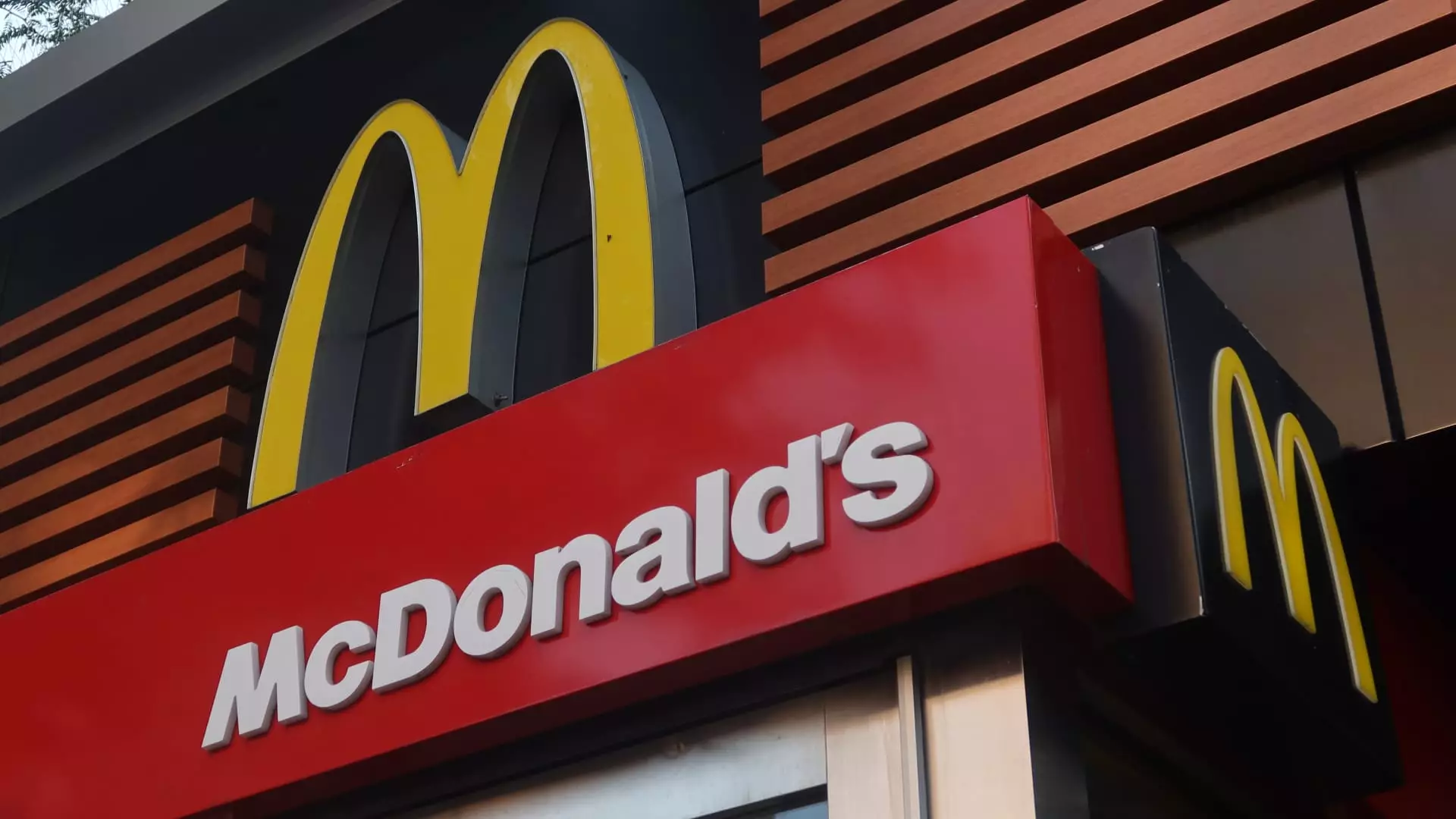McDonald’s latest earnings report may seem like a cause for celebration, but beneath the surface, it reveals a fragile situation that could threaten its future dominance. The company’s ability to surpass analyst expectations—driven by promotional campaigns and menu innovations—paints a picture of resilience. Yet, the narrative quickly unravels when scrutinizing the underlying consumer health and economic realities. Relying on buzzworthy promotions like the return of Snack Wraps or tie-ins with popular movies masks what is truly happening: an industry grappling with declining visits from its core low-income demographic. While the sales bump in the short term may appear promising, it risks glossing over structural issues that threaten McDonald’s competitive edge in the long run.
Temporary Boosts vs. Structural Challenges
The reported 3.8% increase in same-store sales signifies a notable recovery, yet it is crucial to understand that this surge is largely cyclical and dependent on tactical promotions. Promotions are an effective short-term strategy, but they are not a sustainable growth model. McDonald’s is increasingly resorting to temporary price cuts and limited-time offers to maintain customer interest, especially among budget-conscious consumers. These tactics risk eroding brand value and commoditizing the menu—ultimately undermining the premium perception that enables McDonald’s to charge higher prices elsewhere. Furthermore, the company’s own acknowledgment that low-income consumer visits declined by double digits across the industry reveals a deeper structural problem: economic pressures are squeezing the very demographic that traditionally experts see as McDonald’s bread and butter.
The Fragile Consumer Base: An Erosion of Loyalty?
The real challenge for McDonald’s lies in its core low-income customer base, whose spending power has diminished amid a turbulent economy. The chain’s CEO admitted, “reengaging the low-income consumer is critical,” yet the solutions remain superficial, primarily focusing on affordability rather than fostering genuine loyalty. This raises questions about the long-term health of McDonald’s business model if economic headwinds persist. The fact that industry traffic among these consumers has fallen two consecutive quarters underscores a worrying trend: the traditional fast-food model is less resilient in an environment where disposable incomes are tight. If McDonald’s cannot adapt to serve these consumers sustainably—without relying on aggressive promotions—it risks losing relevance altogether.
International Success: A Double-Edged Sword
While international markets—especially in the U.K., Australia, and Japan—are showing stronger growth, these gains may be overly optimistic if viewed in isolation. McDonald’s international segments seem to benefit from less intense competition and more favorable economic conditions, but that shouldn’t obscure the fact that global economic issues like inflation, geopolitical tensions, and supply chain disruptions also threaten these markets. Relying on international growth to offset domestic struggles is a gamble; it might provide a temporary halo, but it is no guarantee of sustainable competitiveness. Moreover, these international gains may not translate into a broader corporate advantage if the fundamental issues confronting the U.S. market remain unaddressed.
Positioning for the Future: A Cautionary Outlook
McDonald’s prospects depend heavily on its ability to balance promotional tactics with genuine strategic innovation. The company’s recent enthusiasm about menu updates, marketing campaigns, and international growth should be tempered by the recognition that superficial increases in sales cannot mask impending customer base attrition. The company’s focus on affordability scores and value perceptions suggests some awareness, but these measures are often reactive rather than proactive. To truly thrive, McDonald’s needs to rethink its approach—innovating beyond quick fixes and superficial promotions, emphasizing quality, experience, and a sustainable value proposition. If not, the company risks a future where declining customer loyalty and economic pressures erode its market share, leaving behind the fleeting glow of short-term gains.

